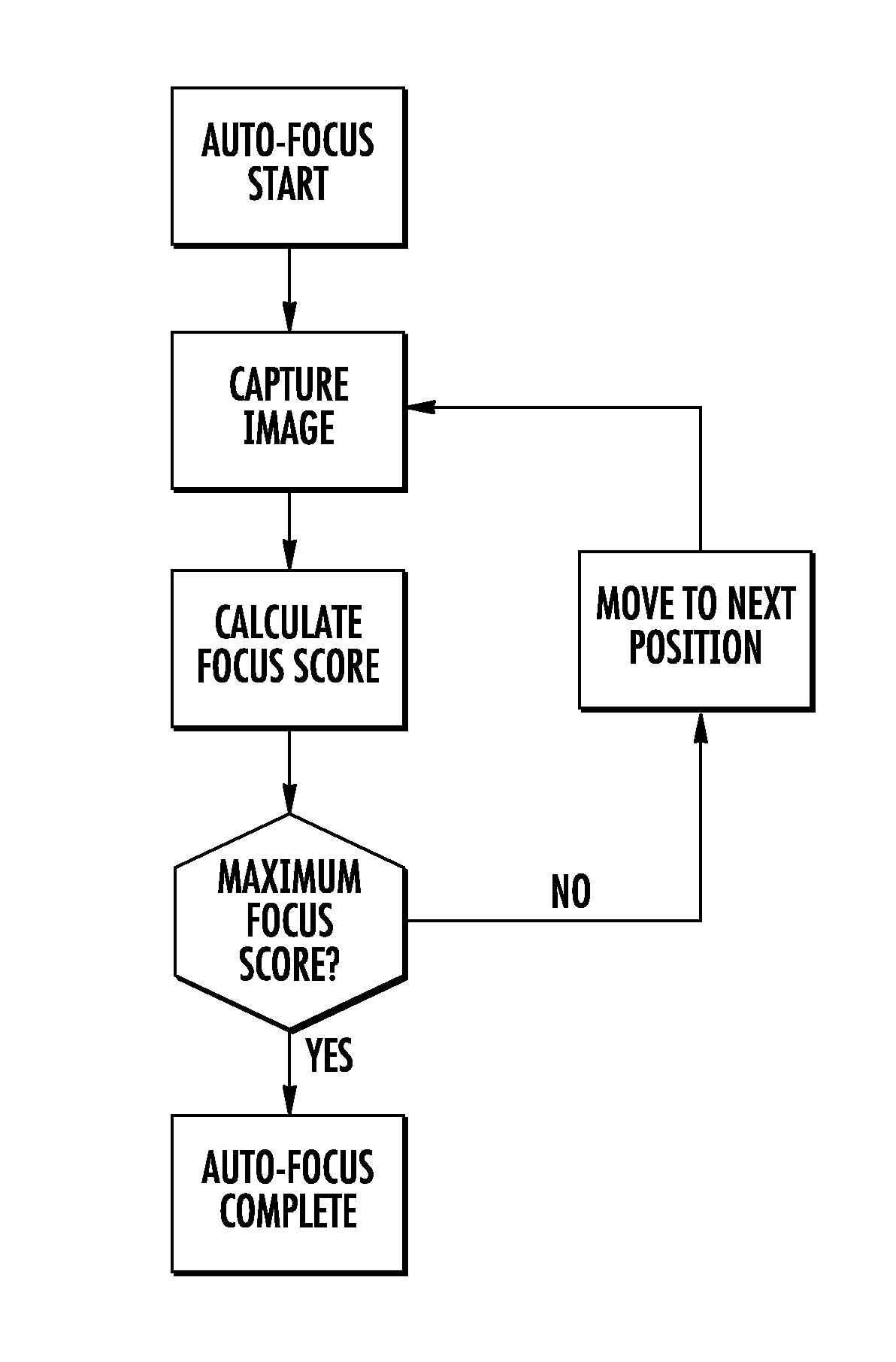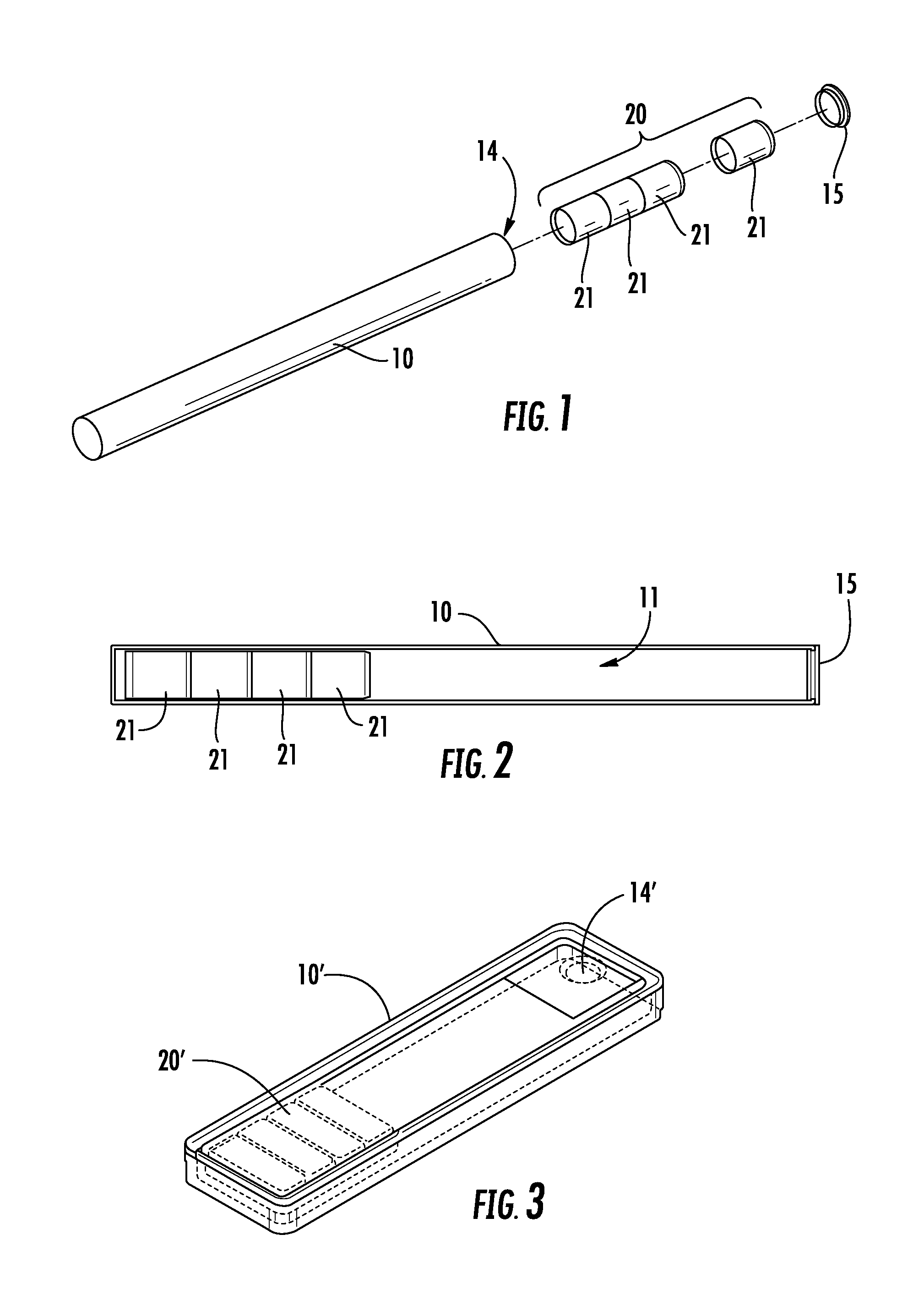Autofocus method for imaging a biological sample and cartridge for use therein
- Summary
- Abstract
- Description
- Claims
- Application Information
AI Technical Summary
Benefits of technology
Problems solved by technology
Method used
Image
Examples
example 1
Anti-Analyte Antibodies
[0114]Antibodies that bind to Aflatoxin are produced as described in J. Langone and H. Van Vunakis, J. Natl. Cancer Inst. 56, 591-595 (1976), J. Groopman et al., Proc. Natl. Acad. Sci. USA 81, 7728-7731 (1984); G. Zhang and F. Chu, Experientia 45, 182-184 (1989), J. Gathumbi et al., Lett. Appl. Microbiol 32, 349-351 (2001), or variations thereof that will be apparent to those skilled in the art. In the alternative such antibodies are purchased from commercial sources such as Santa Cruz Biotechnology Inc., 2145 Delaware Avenue, Santa Cruz, Calif. 95060 USA.
[0115]Antibodies that bind to ergot alkaloids are produced as described in N. Hill et al., Antibody binding of circulating ergot alkaloids in cattle grazing tall fescue, Am. J. Vet. Res. 55, 419-424 (1994), or variations thereof that will be apparent to those skilled in the art.
[0116]Antibodies that bind to fumonisins are produced as desdribed in J. Azcona-Olivera et al., Applied and Environmental Microbiolog...
example 2
Antibody Immobilization
[0120]Antibodies of the Examples above are coupled to a polystyrene carrier or carrier segment as described in the Figures herein, or to a polystyrene chamber side wall portion or segment thereof as described in the Figures herein, by physical adsorption as described in W. Qian et al., Immobilization of antibodies on Ultraflat polystyrene surfaces, Clinical Chemistry 46, 1459-1463 (2000), or variations thereof that will be apparent to those skilled in the art.
[0121]Antibodies of the Examples above are covalently coupled to a polystyrene carrier or carrier segment as described in the Figures herein, or to a polystyrene chamber side wall portion or segment thereof as described in the Figures herein, by the method described in O Siiman et al., Covalently Bound Antibody on Polystyrene Latex Beads, Journal of Colloid and Interface Science, 234, 44-58 (2001), or variations thereof that will be apparent to those skilled in the art.
[0122]Antibodies of the Examples abo...
example 3
Covalent Coupling of Mycoplasma bovis Mouse Monoclonal Antibody to Carboxy Magnetic Particles
[0124]Preparation of Phosphate Buffer, 0.1 M, pH 5.0:
[0125]Phosphate Buffer Powder 0.1 M (Sigma Aldrich cat # P7994, lot #041M6108, 4.3 grams) was dissolved in distilled water (250 ml) and the pH was adjusted to 5.0 by the addition of concentrated Hydrochloric Acid.
[0126]Preparation of Spherotech Carboxy Magnetic Particle Stock Solution:
[0127]A tube was charged with 0.25 ml of Spherotech Carboxy Magnetic Particles (cat # CM-200-10, lot # AA01, 1.0% w / v, 21.4 microns, 10 ml). A magnet was applied to the bottom of the tube to pull the Carboxy Magnetic Particles to the bottom of the tube. The buffer was carefully pipetted off, the magnet removed, and the Carboxy Magnetic Particles were resuspended in 0.05 ml of Phosphate Buffer, 0.1 M, pH 5.0.
[0128]Preparation of N-(3-dimethylaminopropyl)-N-ethylcarbodiimide (EDC) Stock Solution:
[0129]A tube was charged with N-(3-dimethylaminopropyl)-N-ethylcar...
PUM
 Login to View More
Login to View More Abstract
Description
Claims
Application Information
 Login to View More
Login to View More - R&D
- Intellectual Property
- Life Sciences
- Materials
- Tech Scout
- Unparalleled Data Quality
- Higher Quality Content
- 60% Fewer Hallucinations
Browse by: Latest US Patents, China's latest patents, Technical Efficacy Thesaurus, Application Domain, Technology Topic, Popular Technical Reports.
© 2025 PatSnap. All rights reserved.Legal|Privacy policy|Modern Slavery Act Transparency Statement|Sitemap|About US| Contact US: help@patsnap.com



